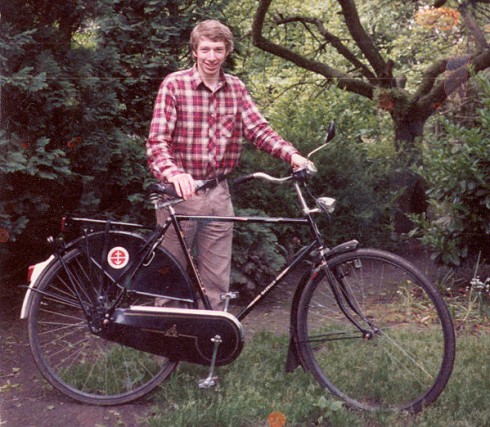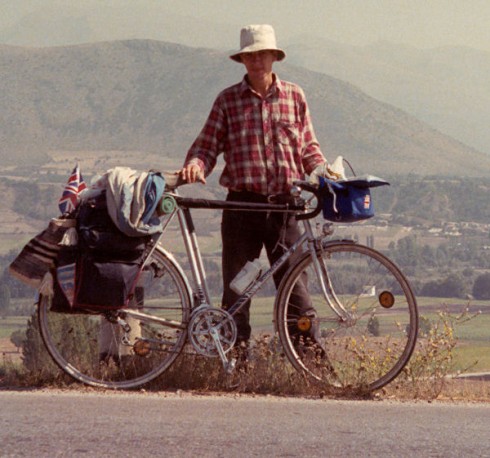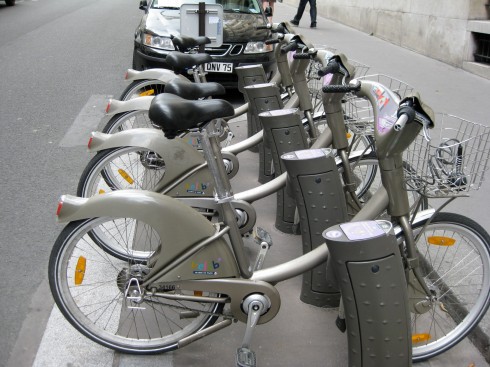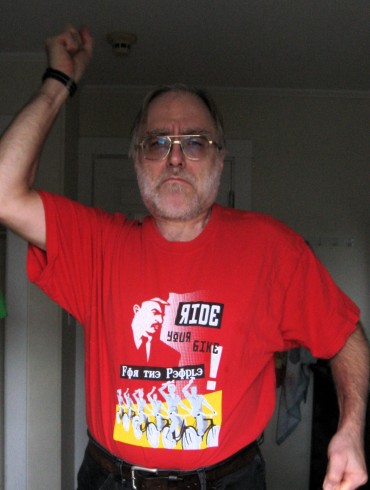A colleague has pointed out the advice on transporting children on the Web site of the International Bicycle Fund, describing this advice as “fairly good.” Well, sort of.
I regard this advice as unimaginative and incomplete. It repeats the old saw that the child needs to be able to hold up his or her head to be carried on a bicycle– advice from manufacturers of child carrier seats, which do not support the head! This requirement has even been written into law in some states, prohibiting carrying a child under one year of age on a bicycle. Meanwhile children ride everywhere in cars in child carrier seats which recline, and which even allow a child to sleep.
The Web page also suggests asking a medical doctor whether the child is ready. The doctor is very likely going to be hyper-cautious, at least here in the USA, with the threat of a malpractice claim buzzing around in his/her head — “oh, you would take your kid on a bicycle — that’s so dangerous.”
The Web page does describe the instability of a bicycle with a child in a seat at the rear, but underrates that problem. A heavy load high up on the rear of a bicycle makes it hard to hold upright by the handlebar — it will tend to pivot around a diagonal line extending from the handlebar to the rear tire contact patch, since most of the weight is far above that line. I’ve had this happen, but fortunately only on a bicycle laden with touring gear or groceries.
The page describes a bicycle trailer as jostling a child more than a car, with a risk that the trailer will roll over. As my friend Sheldon Brown once pointed out, air pressure in trailer tires is usually set way too high, at the rating molded into the tire sidewall. Pressure should be proportional to load — 10 or 15 pounds is plenty when the a trailer is transporting a small child.
Now, someone might also design a child-carrier trailer with suspension. Maybe someone already has done that. I’d also like to see a completely enclosed papoose-type carrier which could sustain a fall to the the road surface and skid along it without risk of injury to an infant. The trailer, the papoose, the cargo bicycle and tricycle which are becoming increasingly popular in Europe to carry children and which aren’t even mentioned in the article — none of these require the child to hold up his or her head. Infants and toddlers can fall asleep at the most inconvenient times, too. A head support makes it possible to continue to ride.
Being able to transport an infant on a bicycle is essential if the bicycle is to be regarded as a serious mode of transportation. I put that opinion into action, back when my son was little. I towed him wearing a Li’l Bell Shell helmet, in a car child seat strapped into a bicycle trailer, before he was 6 months old, and the worst problem we had was that he would fall asleep only to wake up just as we got home. I started to build a cargo bike too, but it proved an unwieldy project, and before I could finish it, my son was tandeming with me. That’s another story, and a happy one too.




